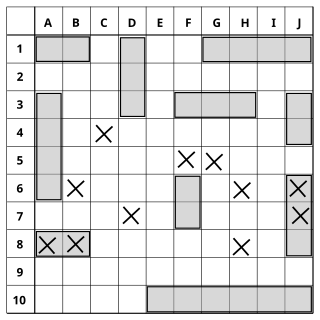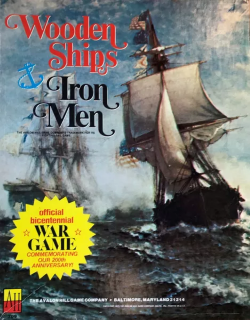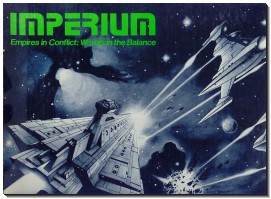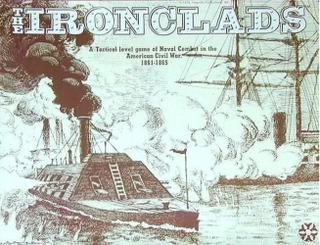Related Research Articles

Traveller is a science fiction role-playing game first published in 1977 by Game Designers' Workshop. Marc Miller designed Traveller with help from Frank Chadwick, John Harshman, and Loren Wiseman. Editions were published for GURPS, d20, and other role-playing game systems. From its origin and in the currently published systems, the game relied upon six-sided dice for random elements. Traveller has been featured in a few novels and at least two video games.

A wargame is a strategy game in which two or more players command opposing armed forces in a realistic simulation of an armed conflict. Wargaming may be played for recreation, to train military officers in the art of strategic thinking, or to study the nature of potential conflicts. Many wargames recreate specific historic battles, and can cover either whole wars, or any campaigns, battles, or lower-level engagements within them. Many simulate land combat, but there are wargames for naval and air combat as well.

Avalon Hill Games Inc. is a game company that publishes wargames and strategic board games. It has also published miniature wargaming rules, role-playing games and sports simulations. It is a subsidiary of Hasbro, and operates under the company's "Hasbro Gaming" division.

Battleship is a strategy type guessing game for two players. It is played on ruled grids on which each player's fleet of warships are marked. The locations of the fleets are concealed from the other player. Players alternate turns calling "shots" at the other player's ships, and the objective of the game is to destroy the opposing player's fleet.

Miniature wargaming is a form of wargaming in which military units are represented by miniature physical models on a model battlefield. The use of physical models to represent military units is in contrast to other tabletop wargames that use abstract pieces such as counters or blocks, or computer wargames which use virtual models. The primary benefit of using models is aesthetics, though in certain wargames the size and shape of the models can have practical consequences on how the match plays out.

The Forever War (1974) is a military science fiction novel by American author Joe Haldeman, telling the contemplative story about human soldiers fighting an interstellar war against an alien civilization known as the Taurans. It won the Nebula Award in 1975 and the Hugo and Locus awards in 1976. Forever Free (1999) and Forever Peace (1997) are respectively, direct and thematic sequel novels. The novella A Separate War (1999) is another sequel of sorts, occurring simultaneously with the final portion of The Forever War. Informally, the novels comprise The Forever War series; the novel also inspired a comic book and a board game. The Forever War is the first title in the SF Masterworks series.

Wooden Ships and Iron Men is a naval board wargame simulating naval combat during the Age of Sail that was published by Battleline Publications in 1974, then revised and republished by Avalon Hill the following year.

The Type 21 frigate, or Amazon-class frigate, was a British Royal Navy general-purpose escort that was designed in the late 1960s, built in the 1970s and served throughout the 1980s into the 1990s.

Imperium is a science fiction board wargame designed by Marc W. Miller, and published in 1977 by the Conflict Game Company and Game Designers' Workshop (GDW). It features asymmetrical forces, the two sides having its unique set of constraints. The game came in a cardboard box illustrated with a space battle on the exterior. It included a cardboard-mounted, folding map of a local region of the Milky Way galaxy, a set of rules and charts, and the 352 counters representing the various spacecraft, ground units, and markers, and a six-sided die. A second edition was published in 1990, a third in 2001, and the first edition republished in 2004.

The Battle of the Yellow Sea was a major naval battle of the Russo-Japanese War, fought on 10 August 1904. In the Russian Navy, it was referred to as the Battle of 10 August. The battle foiled an attempt by the Russian fleet at Port Arthur to break out and form up with the Vladivostok squadron, forcing them to return to port. Four days later, the Battle off Ulsan similarly ended the Vladivostok group's sortie, forcing both fleets to remain at anchor.

Naval artillery is artillery mounted on a warship, originally used only for naval warfare and then subsequently used for shore bombardment and anti-aircraft roles. The term generally refers to tube-launched projectile-firing weapons and excludes self-propelled projectiles such as torpedoes, rockets, and missiles and those simply dropped overboard such as depth charges and naval mines.

Jutland is a naval board wargame published by Avalon Hill in 1967 that simulates the Battle of Jutland in the North Sea during World War I. Upon its release, Jutland was commended for its gameplay and mechanics, but criticism surrounded the complex rules and playing time.

Circus Maximus is a board game that was originally published by Battleline Publications in 1979, but is better known for the 1980 Avalon Hill edition. The game has become very popular at gaming conventions in an oversized form, with 10-foot (3.0 m)-long boards and baseball-sized chariots.

Tactical wargames are a type of wargame that models military conflict at a tactical level, i.e. units range from individual vehicles and squads to platoons or companies. These units are rated based on types and ranges of individual weaponry. The first tactical wargames were played as miniatures, extended to board games, and they are now also enjoyed as video games.
Battleline Publications was a board wargame company founded by Steven Peek in 1973. Output was relatively low at first, with each game being funded by sales of the one before, but their games were generally well-respected. Several were re-published by Avalon Hill, and their second game, Wooden Ships and Iron Men designed by S. Craig Taylor is still considered one of the better games on its subject. They also put out a couple games that can be considered card wargames, and at one point became a division of Heritage Models.

Air Force is a board wargame published by Battleline Publications in 1976, and subsequently re-released by Avalon Hill in 1977, that simulates air combat during World War II. Several expansions for the game were also published.

Tatsuta (龍田) was an unprotected cruiser of the Imperial Japanese Navy. The name Tatsuta comes from the Tatsuta River, near Nara. Tatsuta was used by the Imperial Japanese Navy primarily as an aviso used for scouting, reconnaissance and delivery of priority messages.

The Ironclads, subtitled "A Tactical Level Game of Naval Combat in the American Civil War 1861–1865", is a board wargame published by Yaquinto Publications in 1979 that simulates American Civil War naval combat.

Narvik: The Campaign in Norway, 1940 is a board wargame published by Game Designers' Workshop (GDW) in 1974 that simulates Operation Weserübung, the German invasion of Denmark and Norway during World War II. The game was one of the first in the Europa series of twenty interlocking games envisioned by GDW that would cover the entire European and North African theatres from the start to the end of World War II, using identical map scales and similar rules.
References
- ↑ Tynes, John Scott (2007). "Naval War". In Lowder, James (ed.). Hobby Games: The 100 Best . Green Ronin Publishing. pp. 217–219. ISBN 978-1-932442-96-0.